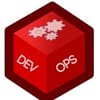Serverless architecture is gaining popularity and it is been used by many organizations for all its operational tasks. Ther are many companies which use serverless services like Lamba for its microservices architecture.
AWS, Google Cloud, and Azure provide good web portal, CLI, and SDK for their respective serverless services. However, When you go through the CI/CD process, you need a good framework other than CLI's and SDKs for good traceability and management. Here is where serverless framework comes into play.
Serverless.com provides a framework for deploying serverless code to AWS Lambda, Google Cloud Functions and Azure Functions. You can organize your serverless deployment using configuration files provided by this framework.
We have done a basic deployment on AWS Lambda using this framework and we loved it. This guide will help you to get started with the serverless framework on AWS Lambda.
Installation and Configuration
You should have awscli installed and configured on your system. Serverless framework will use the ~/.aws/credentials file for deploying lambdas
- Install node js. Follow steps from here from here – > Latest Nodejs Installation
- Install the serverless framework.
npm install -g serverless- Check the installation using the following command.
serverlessGetting Started
Let's get started with a demo python application.
Step1: cd in your project directory. You can use any folder of your choice.
Step 2:. Create a basic python service template. It will create a python based serverless template.
serverless create --template aws-python --path devopscube-demoThe output would look like the following.
Serverless: Generating boilerplate...
Serverless: Generating boilerplate in "/serverless-demo/devopscube-demo"
_______ __
| _ .-----.----.--.--.-----.----| .-----.-----.-----.
| |___| -__| _| | | -__| _| | -__|__ --|__ --|
|____ |_____|__| \___/|_____|__| |__|_____|_____|_____|
| | | The Serverless Application Framework
| | serverless.com, v1.15.3
-------'
Serverless: Successfully generated boilerplate for template: "aws-python"It will create the following folder structure
|-- devopscube-demo
| |-- handler.py
| |-- serverless.ymlStep 3: cd into devopscube-demo This folder would contain two files named handler.py and serverless.yml. handler.py file contains a python code that will be deployed to lambda. serverless.yml contains the configuration which tells the serverless framework about how and what events it should associate with the given lambda function. You can specify the function name in serverless.yml file. In our case its the default hello
cd devopscube-demoStep 4: deploy the basic service to AWS. This would create all the basic configurations on AWS for deploying the lambda function. (IAM Role, S3 bucket to keep the artifact, Cloudformation Template for Lambda and AWS log group for Lambda logs.)
serverless deploy -vIn your AWS dashboard, you can see the created lambda function.
Step 5: Now, let's invoke our basic python function.
serverless invoke -f hello -lYou will see a successful execution with the following output
{
"body": "{\"input\": {}, \"message\": \"Go Serverless v1.0! Your function executed successfully!\"}",
"statusCode": 200
}
--------------------------------------------------------------------
START RequestId: ebb938e0-5803-11e7-825b-8f51036d398a Version: $LATEST
END RequestId: ebb938e0-5803-11e7-825b-8f51036d398a
REPORT RequestId: ebb938e0-5803-11e7-825b-8f51036d398a Duration: 0.26 ms Billed Duration: 100 ms Memory Size: 1024 MB Max Memory Used: 19 MBStep 6: Now let's remove the default python program and add our own program which returns the sum of two numbers. Our new handler.py would look like the following.
import json
def hello(event, context):
a = 1
b = 4
return a+bStep 7: Since we have updated our function, we need to deploy the function again for updating the lambda for new code. let's deploy our code using the following command.
serverless deploy function -f helloOnce deployed, you can invoke the function again using the invoke command.
serverless invoke -f hello -lAdding More Function
You can add more functions to your existing template. Here is what you have to do.
- Create a Python file named
demo-function.pyin your project directory where you have thehandler.pyfile. - Add the following code to the file.
import json
def demo(event, context):
body = {
"message": "Go Serverless v1.0! Your function executed successfully!",
"input": event
}
response = {
"statusCode": 200,
"body": json.dumps(body)
}
return response
# Use this code if you don't use the http event with the LAMBDA-PROXY integration
"""
return {
"message": "Go Serverless v1.0! Your function executed successfully!",
"event": event
}
"""The above code contains the python definition called demo. In our first example, it was hello.
- Add a new function called
demo-functionin the serverless.yml file along with your first hello function. Your function definition would look like the following.
functions:
hello:
handler: handler.hello
demo-function:
handler: testing.demo
- Now that we have added a new handler and a function, we should redeploy the service.
serverless deploy -v- Once deployed, invoke our new function.
serverless invoke -f demo -l- If you edit the code, you can update and re-invoke it using the following command.
serverless deploy function -f demo
serverless invoke -f demo -lThere are more functionalities in this framework. If you are using or thinking about using AWS Lambda, Google Cloud Functions or Azure functions, you should definitely try out the serverless framework. In this serverless framework tutorial, we have just scratched the surface. We will be covering more topics on the serverless framework.


